There are so many things to consider when we’re putting together our bedroom – we have to choose a suitable mattress as well as sheets, pillows, and either a comforter or duvet. However, one thing people often forget to consider is the best bed height for their sleep needs!
Bed height is a measure of how high the complete bed is from the floor to the top of the mattress. This means adding together the height of the bed frame, the mattress, and the possible box spring.
Finding the right bed height is important for a number of reasons – it affects us physically as we have to get in and out of bed every day, and it also impacts the overall look and style of our bedroom. While there is no one perfect height for everyone, we’re here to explore the best bed height and breakdown the benefits and drawbacks of high beds vs. low beds!
Finding the Best Bed Height
Determining the right bed height for an individual is all about finding something that allows one’s legs to be close to a 90-degree angle. The average knee height for adults is somewhere between 16″ and 24″ off the ground.
While 16″ to 24″ inches is generally a standard bed height, it is pretty simple for people to find out exactly what height will work for them. Basically, they should sit down on the edge of the bed and make sure that their legs are at close to a 90-degree angle. It can be a bit less or more than 90-degrees, but this is what they should be shooting for.
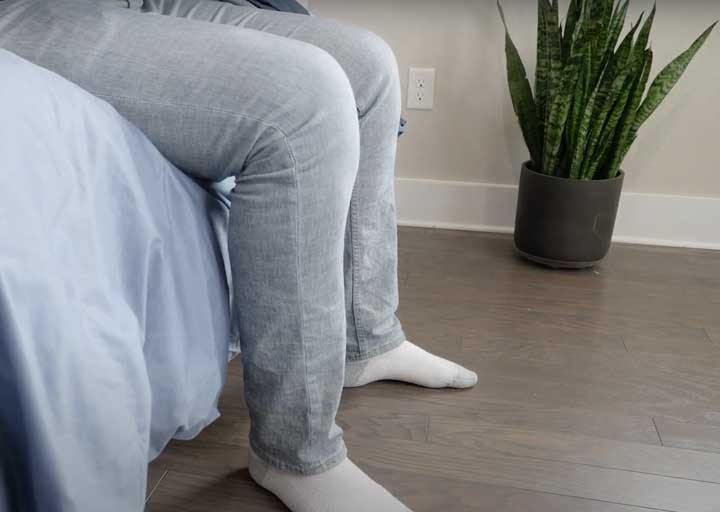
It is most important to make sure that the bed isn’t too high or too low. If the bed is too high off the ground, the feet will dangle above the ground. This will make it difficult to get into bed without a stool or other type of platform. While some people might not mind jumping into bed, this can be dangerous for and challenging for elderly sleepers and those with mobility issues to attempt.
RELATED: Best Mattress for Seniors
If the bed is too low to the ground, it will be easy for one to stretch their legs out in front of them or, if they tuck their legs back, their knees will be above their hips. This will make it more difficult to get out of bed without real effort. Again, this might not be as much of an issue for some people, but anyone who has mobility issues will find this to be a challenge.
The main determining factor of the proper bed height is one’s personal height. A taller individual will find a taller bed easier to get in and out of. A shorter person, on the other hand, will most likely need something that is lower to the ground. Some people even put their mattress on the floor to keep it as low as possible.
Different Types of Platforms and Beds
There are numerous platforms and beds to choose from when shopping. They are all different heights and some require a box spring that will add even more height to the bed overall. Let’s take a look at the different types of beds, how tall they are, and who they should be a good fit for.
Platform Beds
With a comfortable mattress included, platform beds are around 18” off the ground. These beds are popular at the moment because, aesthetically, they give a more modern or contemporary feel to a room but they do limit one’s storage options.
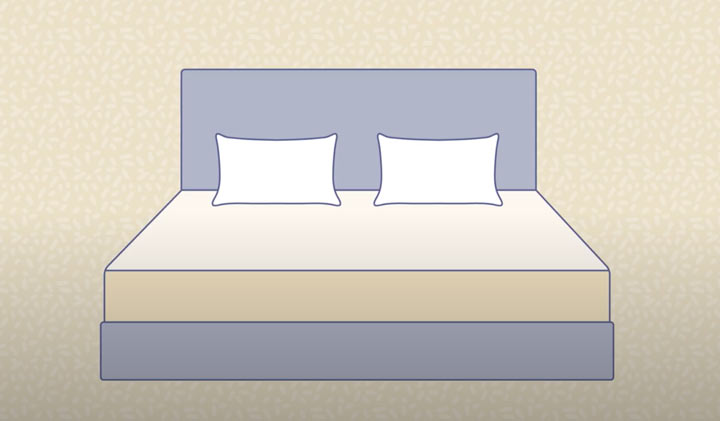
Most platform beds have slats at the bottom and won’t require a box spring, which typically adds additional height to a bed.
Some platform beds are only inches off the floor. They may not be the best option for taller people or the infirm, because it may require the sleeper to get into a crouching or squat-like position in order to get up.
Traditional Bed with a Standard Frame
Standard bed frames usually require a box spring, which would reside between the bed frame and the mattress. This raises the overall height of the bed to about 25” from the ground. This tends to be a comfortable height for most, as it’s right around knee-level and is the most popular type of bed.
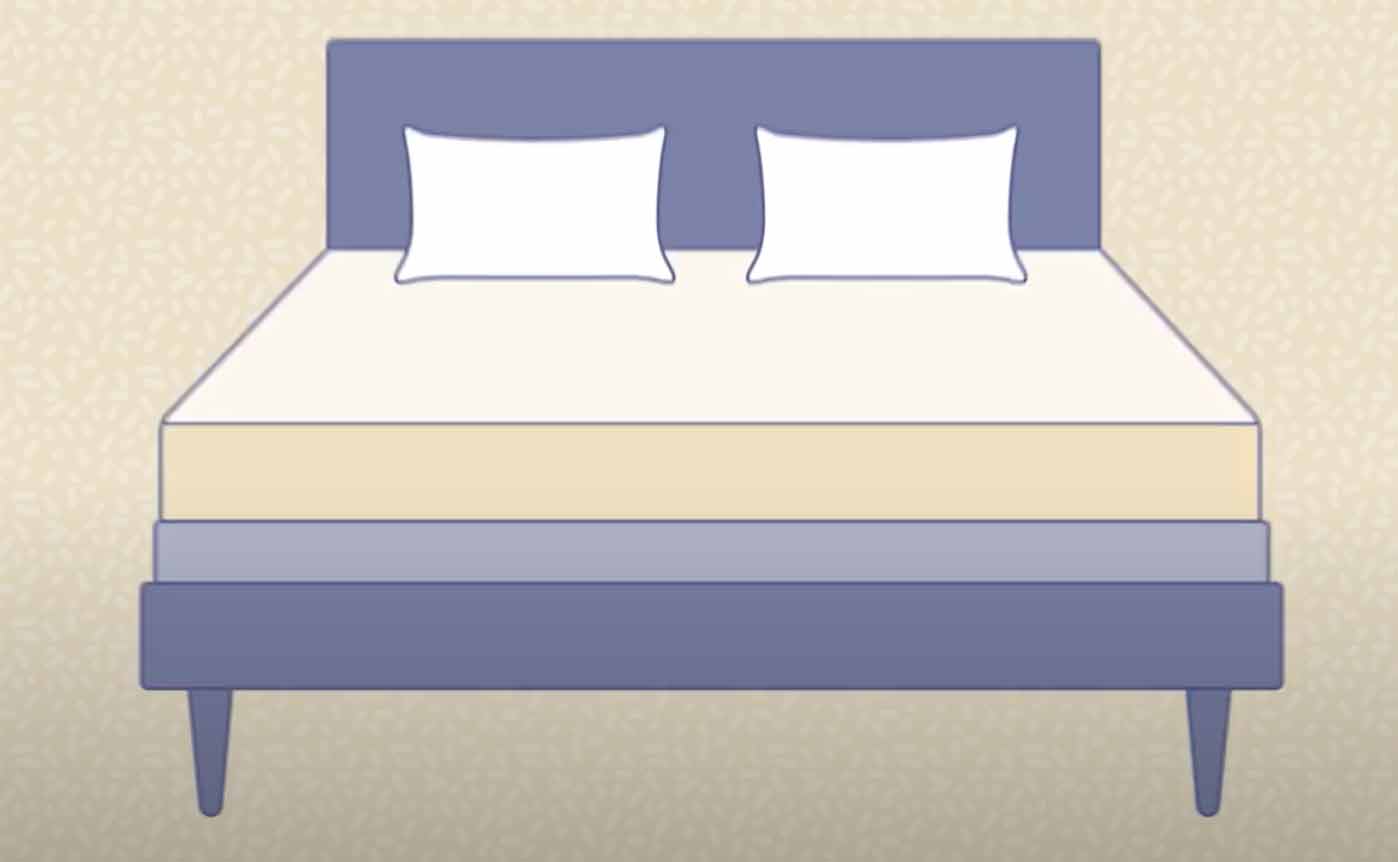
This type of bed is popular with rooms and houses that have a traditional design and that have taller ceilings, as the additional height helps fill up space.
Antique Beds
Older beds, like vintage pieces or antique beds, tend to be higher off the ground – closer to 36” inches. While it may allow for a good amount of extra storage, it can be especially difficult to get on or off the bed if someone is petite, elderly or has bad backs or knees.
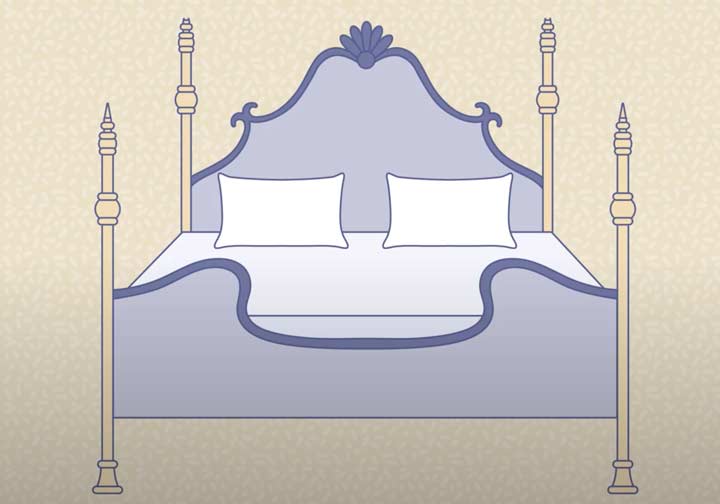
Taller people and those who prefer a more classic, antique look to one’s bedroom will be very pleased with an antique bed.
Futons
Futons, a sofa that doubles as a guest bed, tend to be about 20”-21” off the ground, making them slightly taller than a platform bed. Those with longer legs may need to crouch in order to get up, so it might not be the best match for taller people
There is little room for storage underneath futons but, unlike these other types of beds, they can be folded and pushed toward the wall, allowing for more floor space.
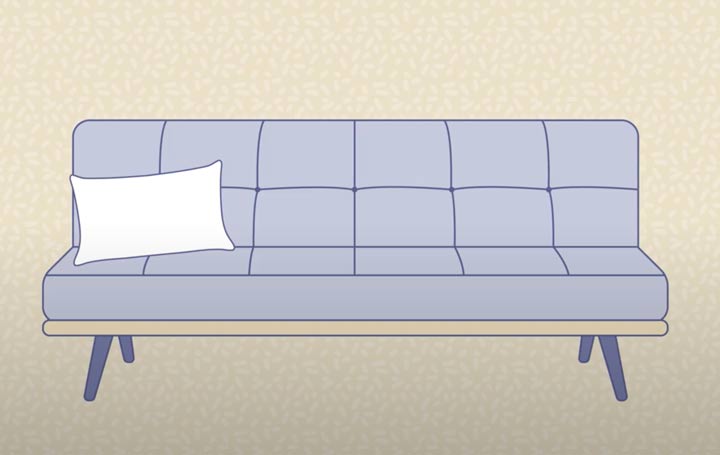
Aesthetically speaking, they can be a good mattress for a guest room, but futons might look a little dorm-roomy if used in someone’s main bedroom.
Final Thoughts
In the end, it is all about finding a height that makes it easy to get in and out of bed. It is best to consider one’s height and mobility when making that final decision!
Best Bed Height FAQs
What is a good height for a bed?
It is smart to find a bed height that allows one to sit toward the edge with the legs at a 90-degree angle. The average knee height is between 16″ and 24″, but it will really depend on one’s height.
Does bed height affect sleep?
Overall, the height of the bed will not affect the quality of someone’s sleep. That being said, the thickness of the mattress will determine the amount of comfort or support someone receives. For instance, thicker mattresses are usually more supportive than thinner mattresses and, if they have a thicker comfort layer, they will also be more comfortable.
How high should a bed be for an elderly person?
Elderly sleepers can have issues getting in and out of bed, whether the bed is too tall or too short. Elderly sleepers should look for something 20″ and 23″, making it easy for them to get in and out of bed safely and easily.
How can I increase the height of my bed?
The easiest way to increase the height of the bed is by using bed risers. These are placed under the legs of the bed and help lift it further off the floor. This adds more storage space underneath the bed, but it does make the bed less stable.
What is the best bed height for sex?
Ultimately, this is up to your personal preference. People with mobility issues may find it difficult to get in and out of a low-sitting bed. Others may prefer a taller bed because it allows more creativity with sexual positions. And if you’re looking for the best mattress for sex, check out our article!

